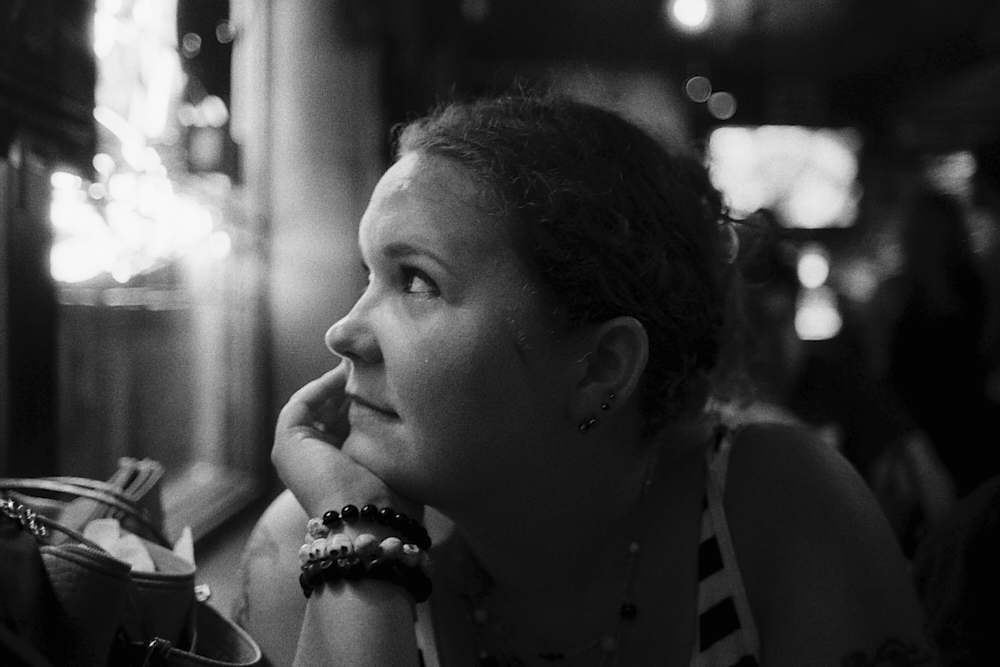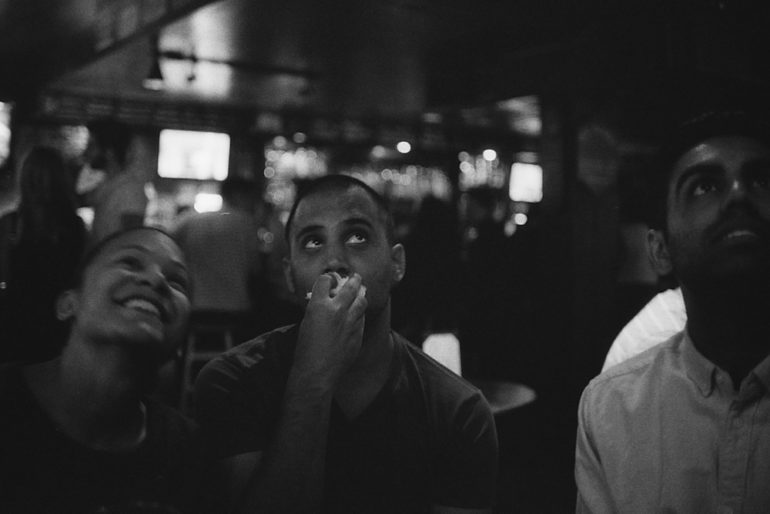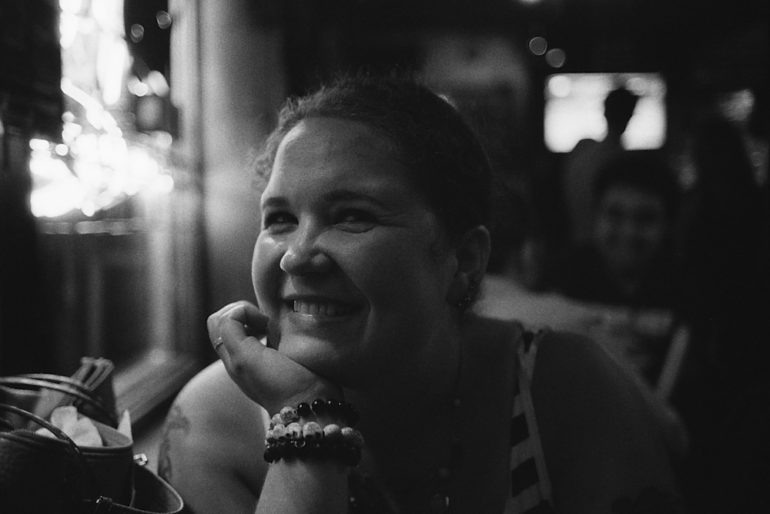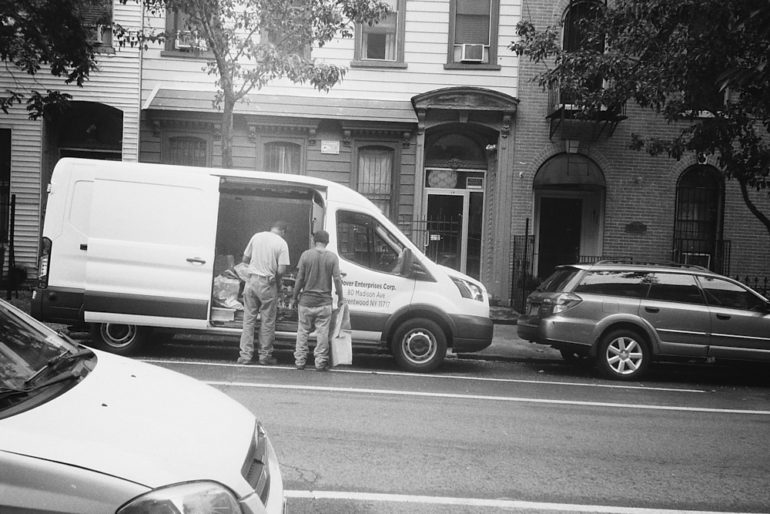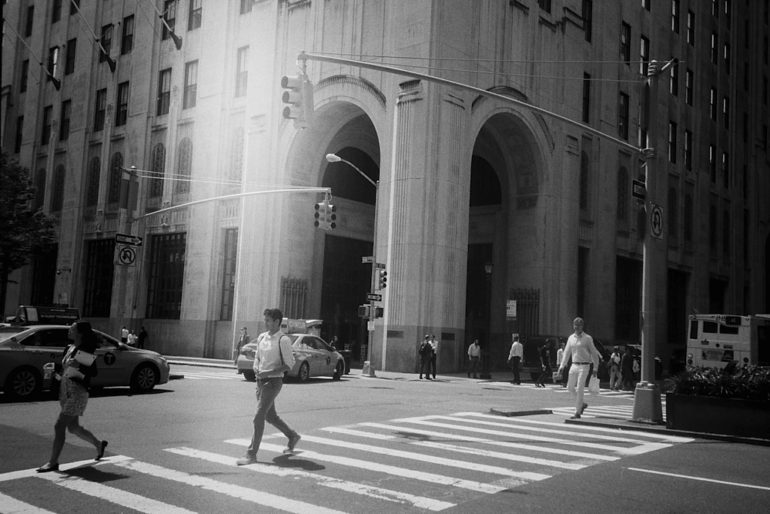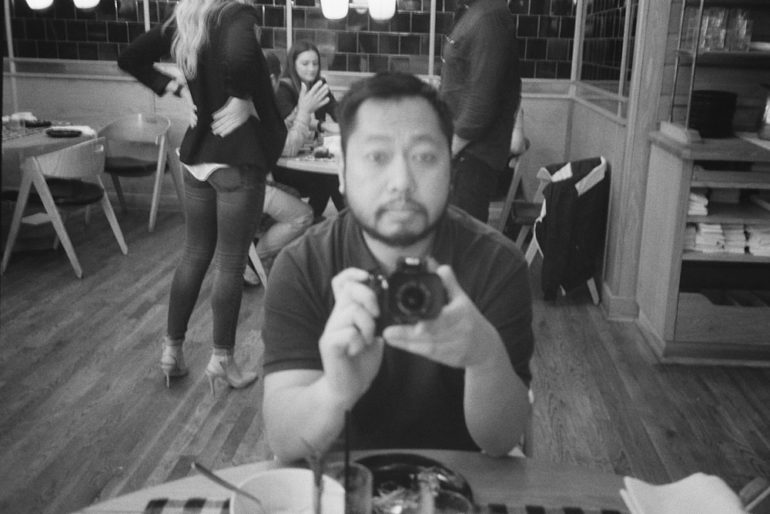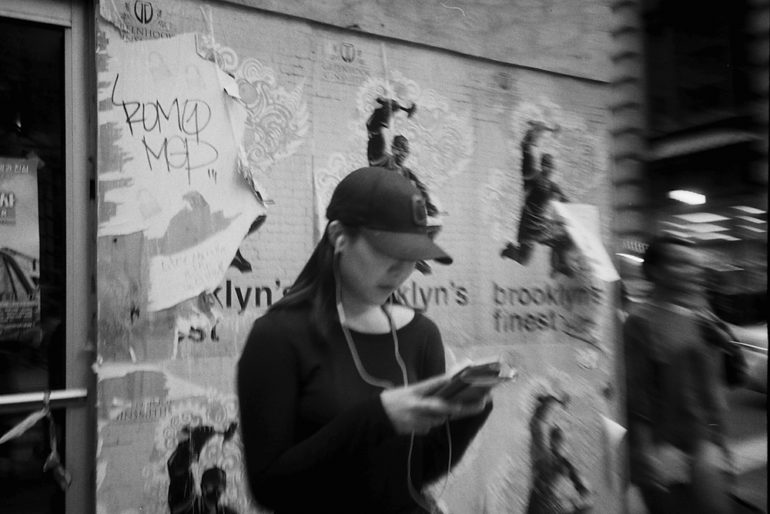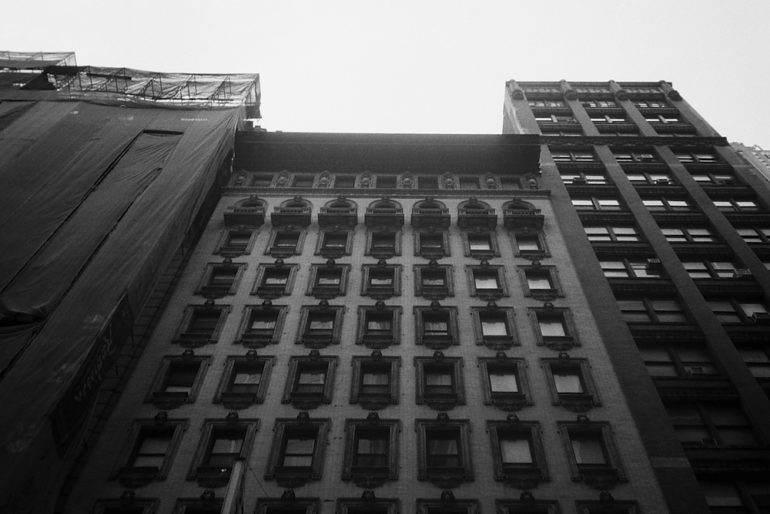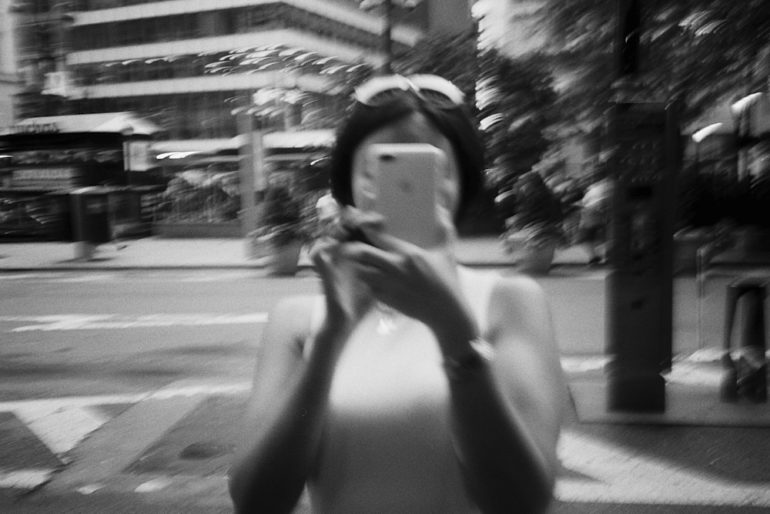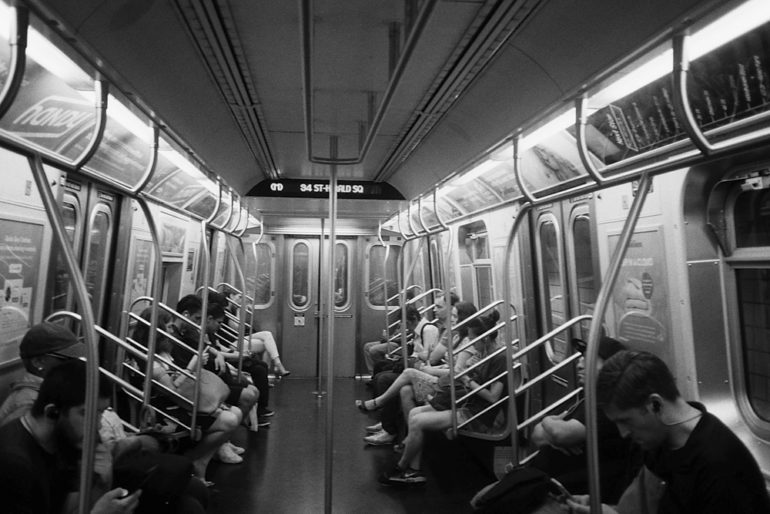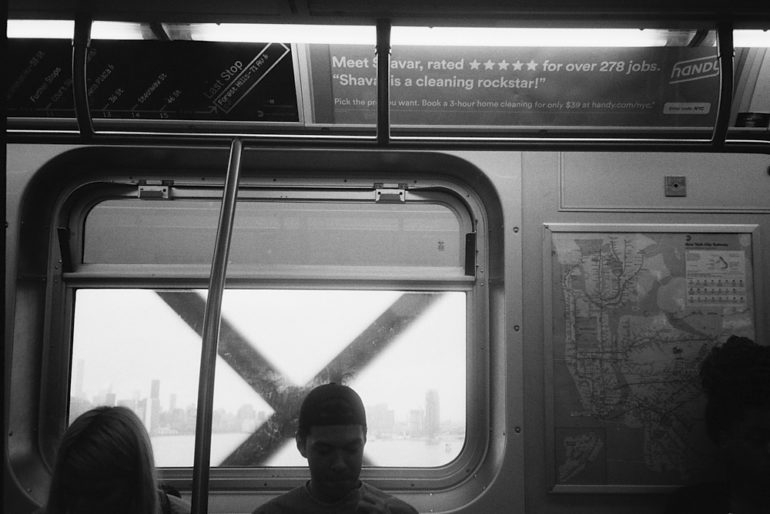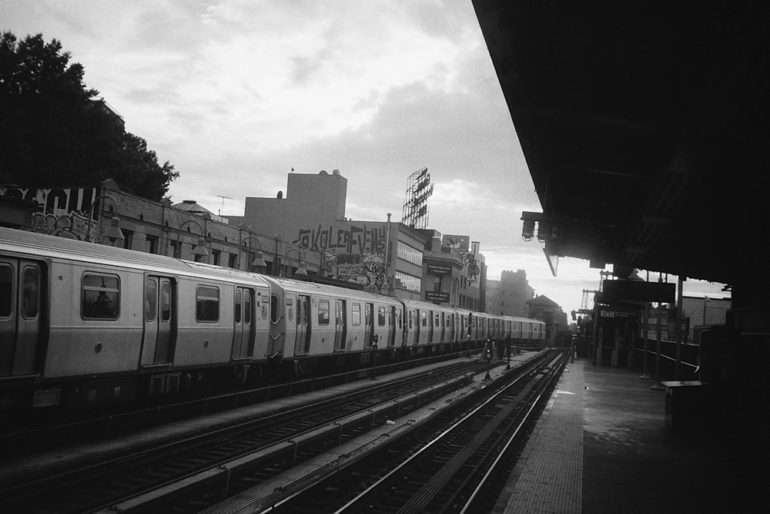Last Updated on 01/08/2018 by Mark Beckenbach
Ilford Delta 400 is perhaps my absolute favorite film emulsion.
While I really enjoy the look of Kodak Tri-X 400, almost nothing in black and white has made me drool like Ilford Delta 400. I’ve always felt Ilford Delta 400 delivers those inky, beautiful black levels I’m smitten with. It’s a beautiful film for street photography, portraits, candids, etc. It’s simply a gorgeous film that consistently delivers everything I want in a photo. What makes Ilford Delta 400 even better for me is that it pushes and pulls well and looks good no matter what ISO you’re shooting it at. I’ve shot it in both 120 and 35mm and found both types of results to look pretty fantastic. Ilford Delta 400 doesn’t have the characteristic grain Tri-X does, but a very classic look instead. It isn’t as gritty as Tri-X, and for that reason you shouldn’t necessarily use it as such.
Tech Specs
Taken from the Delta 400 website
ILFORD DELTA 400 PROFESSIONAL is a high speed, black & white film designed to produce images with extraordinary depth and detail.
Created using our latest Core-shell™ emulsion technology, DELTA 400 produces images with exceptional sharpness and the finest of grain to offer a leading combination of speed vs sharpness along with impressive tonal range.
This highly versatile film delivers outstanding results over a broad exposure range of ISO 200 – ISO 1600 while its ISO 400 rating allows the use of faster shutter speeds yet with the comparable quality of medium speed films.
DELTA 400 can be processed in a wide range of different developers using spiral tanks, deep tanks and automatic processors.
Ease of Use
Ilford Delta 400 shares some similarities with Kodak Tri-X when you consider the looks to them. In fact, our premium publication, La Noir Image, has a post dedicated to this. The two look very similar to one another but where the differences really tend to come out is in the midtones. When using standard developers, you’ll get more of the “Lightroom clarity look” from Tri-X and a much more natural look from Ilford Delta 400. When pushed to something like ISO 1600 or ISO 800, the film will appear much more contrasty but still very gorgeous. In fact, lots of photographers love the look of pushed Delta 400. I’ve found it to be best for candids personally, but not necessarily for street photography–at least that’s to say that it isn’t my favorite when it comes to consistency. Parties? Sure. Portraits? Sure. Cityscapes? It’s alright; but I much prefer the look Acros gives for that.
Image Quality
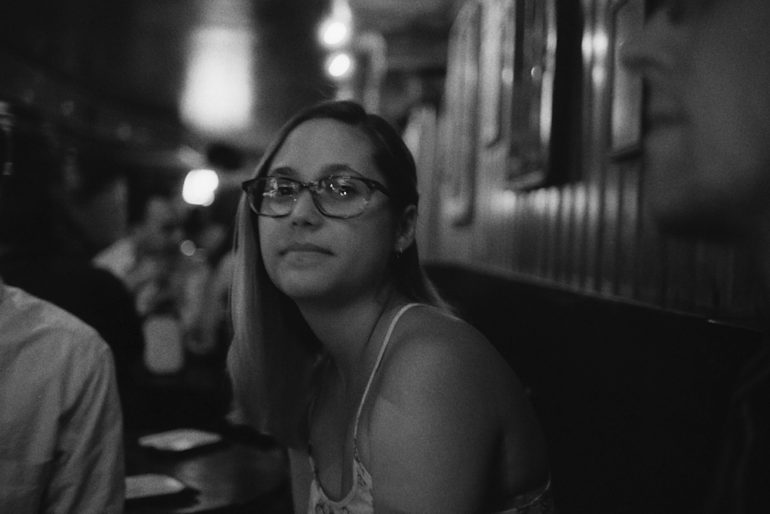 Ilford Delta 400 has a finer grain than Tri-X 400. At the same time, it’s sharper than HP5 and Lady Grey 400; but it isn’t sharper than Street Pan 400. It’s a forgiving film, but perhaps the reason why Tri-X is well regarded as a favorite film of many is because it’s arguably even more forgiving. Tri-X has an almost cinematic look to it at times, but more modern-cinematic. When I look at Ilford Delta 400 I think along the lines of classic movie stills from the 1950s.
Ilford Delta 400 has a finer grain than Tri-X 400. At the same time, it’s sharper than HP5 and Lady Grey 400; but it isn’t sharper than Street Pan 400. It’s a forgiving film, but perhaps the reason why Tri-X is well regarded as a favorite film of many is because it’s arguably even more forgiving. Tri-X has an almost cinematic look to it at times, but more modern-cinematic. When I look at Ilford Delta 400 I think along the lines of classic movie stills from the 1950s.
Many photographers are bound to steer themselves more towards the look of Kodak Tri-X. But some will want something different. For those photographers I need to absolutely recommend Ilford Delta 400. It has inkier blacks, but the contrast isn’t as harsh as with other films.


